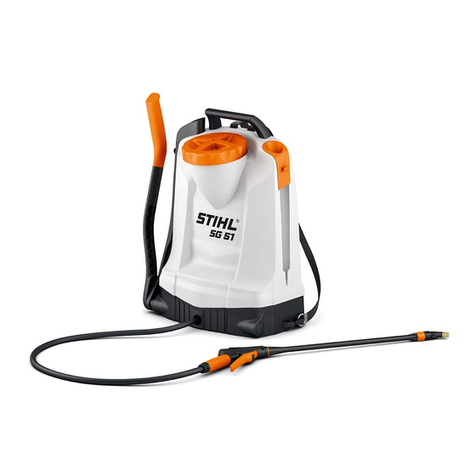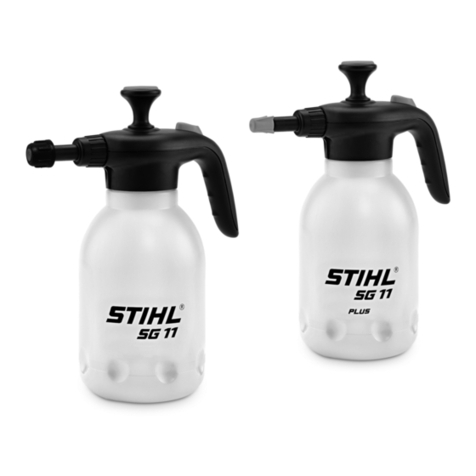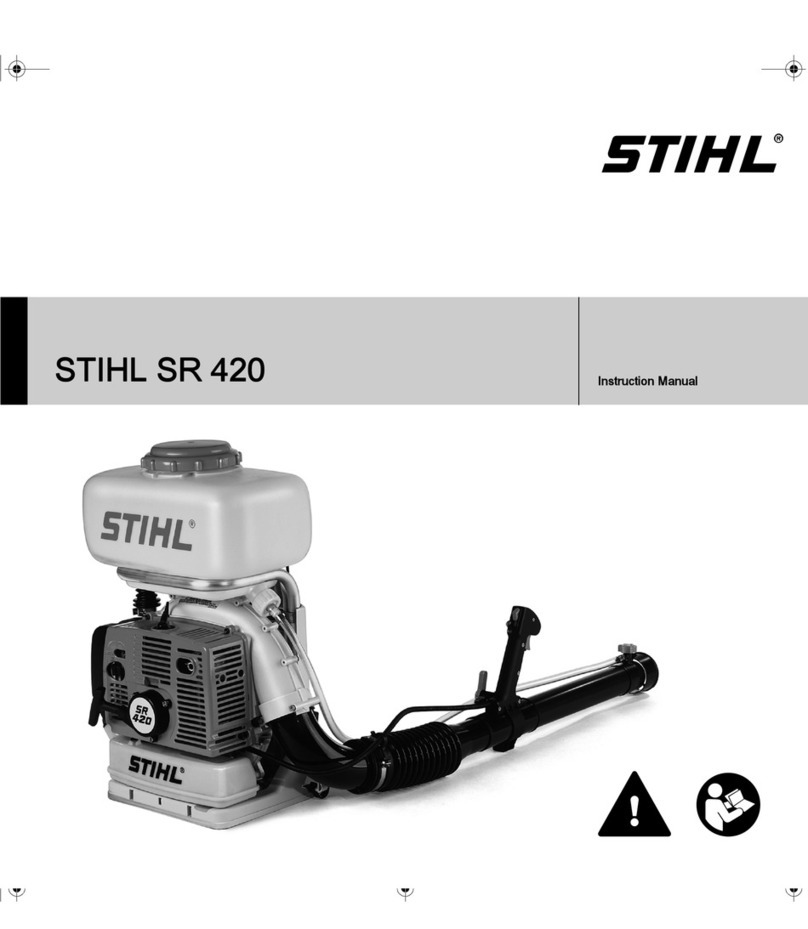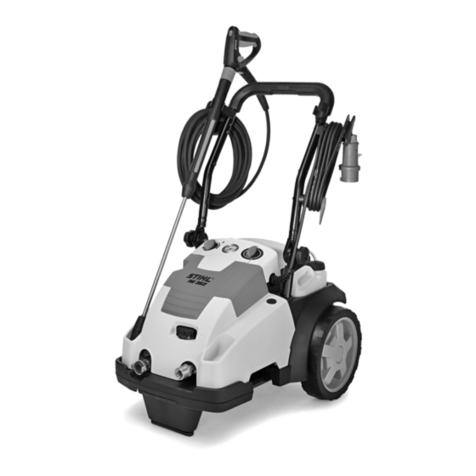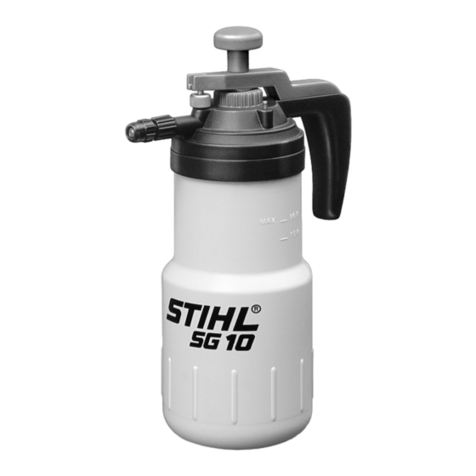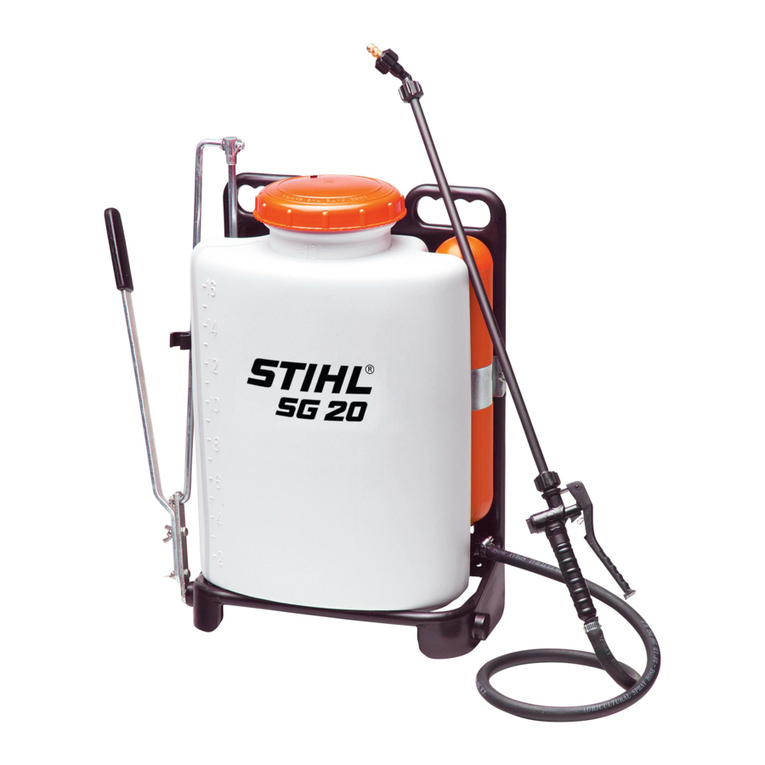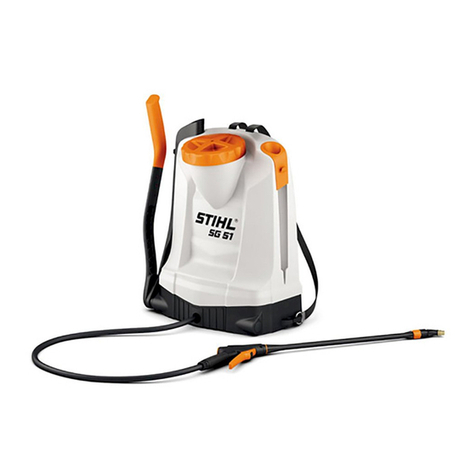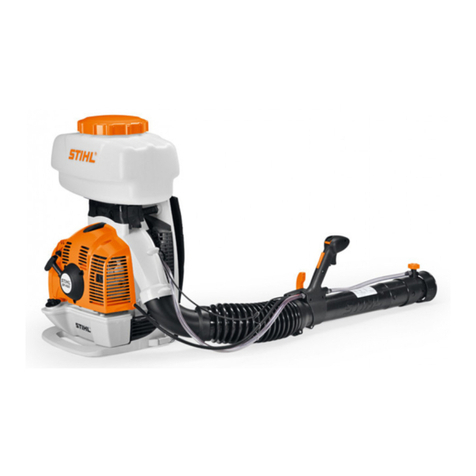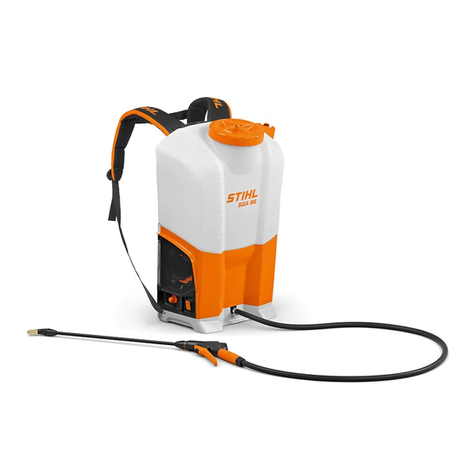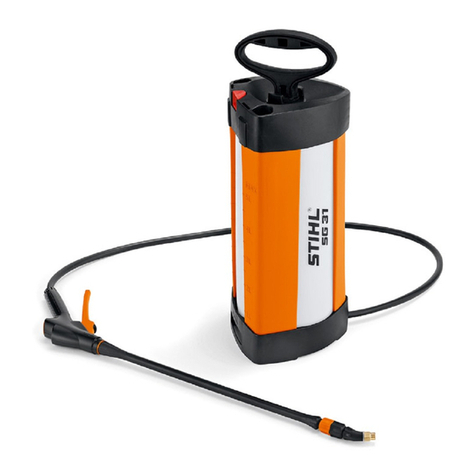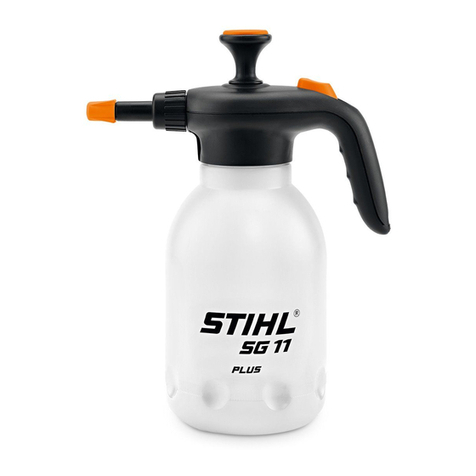
SG 20
English
4
–Only prepare sufficient solution for
the job in hand so that nothing is left
over.
–Mix different chemicals only in
accordance with the manufacturer's
instructions – incorrect mixtures
may produce toxic fumes or
explosive solutions.
–Do not mix different plant protection
products unless such a mixture is
approved by the manufacturer.
Filling the Container
–Stand the sprayer on a level surface
– do not fill the container above the
maximum mark.
–To reduce the risk of injury, do not
fill the unit while wearing it on your
back.
–When filling from central water
supply, do not immerse the end of
the hose in the solution – sudden
low pressure in the system may
cause the solution to be sucked
back into the water supply.
–Before filling the container with
spray solution, carry out test run
with fresh water and check all parts
of the sprayer for leaks.
–After filling, fit the filler cap and
tighten it down firmly.
Application
–Work only in the open or in very well
ventilated locations, e.g. open
greenhouses.
–Do not eat, drink or smoke while
working with plant control
chemicals.
–Never blow through nozzles or other
components by mouth.
–Avoid contact with plant control
chemicals – immediately change
clothing contaminated with plant
control chemical.
–Do not spray in windy conditions.
Too high or too low a pressure or
unfavorable weather conditions can
result in the wrong solution
concentration. Overdosing may damage
plants and the environment. Under-
dosing may result in unsuccessful plant
treatment.
In order to reduce the risk of damage to
the environment and plants, do not
operate the sprayer:
–pressure is too high or too low
–in windy conditions
–at temperatures above 25°C in the
shade
–in direct sunlight
In order to reduce the risk of accidents
and damage to the sprayer, never
operate the sprayer with:
–flammable liquids
–viscous or sticky liquids
–caustic or corrosive chemicals
–liquids hotter than 50°C
Storage
–During work breaks, do not leave
the unit in the hot sun or near any
heat source.
–Do not store spray solution in the
container for longer than one day.
–Store and transport spray solution
only in approved containers.
–Never store the spray solution in
containers intended for foods,
drinks or animal feed.
–Do not store spray solution with
foods, drinks or animal feed.
–Keep spray solution out of the reach
of children and animals.
–Store the unit empty and clean. It
must not be under pressure.
–Store the spray solution and sprayer
in a place secured against
unauthorized use.
–Store the spray solution and sprayer
in a dry place protected from frost.
Disposal
Never dispose of residual chemicals or
contaminated rinsing solutions in
waterways, drains, sewers, street
gutters or manholes.
–Dispose of residual plant protection
products and used containers in
accordance with local waste
disposal regulations.
Transporting the Unit
Transporting in a vehicle:
–Properly secure the unit to prevent
turnover and damage.
–The container must be empty and
clean.






